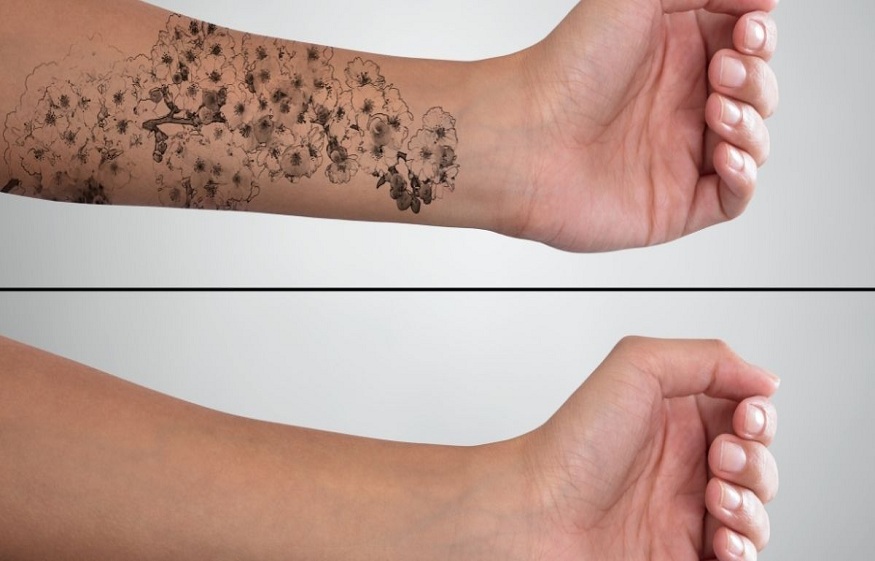Before beginning the process of removing a tattoo with a laser, it is essential to have a firm grasp of the fact that the outcomes may differ from person to person. After a series of treatments, some tattoos only fade in color partially, leaving behind only a shadowy trace of the original design—a phenomenon known as a “ghost image.” There is no way to know in advance how many sessions of laser tattoo removal will be necessary because the number of treatments required to remove a tattoo varies from patient to patient. You will need to schedule many appointments with a tattoo removal center in NY. Be wary of establishments that promise to remove you after a predetermined number of times. Following treatment, it is not uncommon to experience side effects such as blistering, swelling, the elevation of the tattoo, pinpoint bleeding, redness, and even transient darkening of the tattoo. After a few weeks, the majority of patients have a resolution of these typical post-treatment symptoms.

Bleeding
When getting a laser tattoo removed, the danger of bleeding is extremely low, if it even occurs at all. However, bleeding is a risk that is inherent to any surgery. The first few treatments are normally so superficial that there is no bleeding; with subsequent treatments, the laser penetrates deeper, so there may be some light bleeding and scabbing following the process; nonetheless, significant bleeding is not a problem.
When a tattoo is removed surgically, there is a greater risk of bleeding than when it is removed non-surgically. In order to lessen the likelihood of you bleeding during surgery, you would be given a list of medications that you should refrain from taking for the two weeks prior to the procedure. It is highly recommended that you give that list your whole attention and pay close attention to the items on it.
FROSTING
The frosting is one of the acute side effects of laser tattoo removal, along with swelling. Frosting can also occur after the procedure. In spite of the fact that it does not seem anywhere as appealing as its name suggests, the presence of this substance after a medical operation is likely to be beneficial to the condition of your skin.
Blistering
Even during the removal procedure at a tattoo removal center in NY , the laser would heat up the ink particles that are embedded in your skin. This heating up of the ink particles can cause the small blood vessels that surround the tattoo to break. As a direct consequence of this, you can develop some superficial blisters that are filled with water and ink. Blisters are actually pretty typical and serve as an indicator that the recovery process has started once they appear. If you don’t pop the blisters, it should only take between three and fourteen days for the sores to entirely heal up, despite the fact that they might not appear very attractive and might be painful to touch.
Scarring
Those who intend to use a laser to erase their tattoos likely have the most significant concern, which is the possibility of scarring. The severity of the treatments directly correlates to the likelihood that a scar will be left behind. Certain parts of the body, including the wrists as well as the ankles, have a greater propensity to scar than others do. Fortunately, the majority of scars left behind after having a tattoo removed are extremely few and considerably less obvious than the tattoo itself.
Itching
Again, this should be taken as a positive indication because it indicates that your immune system is beginning to kick in and begin the process of healing the damaged area. The sense of itching is rather typical, but just like with any other sort of skin irritation, you should make every effort to refrain from scratching the affected region. There is a possibility that scratching will reduce the efficiency of the removal. You run the danger of tearing the skin and creating a wound, either of which can result in extra scarring as well as the possibility of infection. You should not use any creams or lotions on the affected region as a general rule; however, if the itching becomes intolerable, you should consult with the individual who performed the laser treatment for guidance.
Immune Reaction
It is extraordinarily rare for a laser tattoo diagnosis to stimulate a person’s immune system, which causes it to acknowledge the ink as just a foreign matter. This can lead to an autoimmune reaction on tattoo ink in these other areas of the body, starting to cause the ink to fade, although those areas were not treated by the laser. However, this type of reaction can occur.
Find the best tattoo removal center in NY online for tattoo removal services.









Leave a Reply